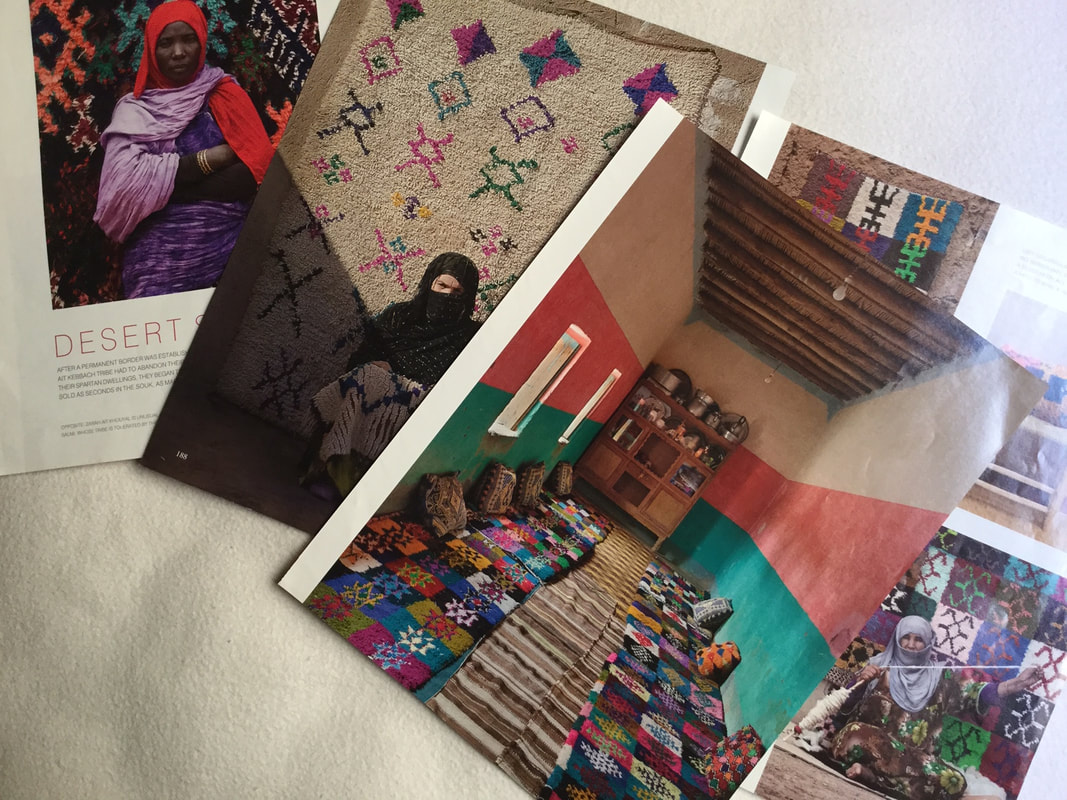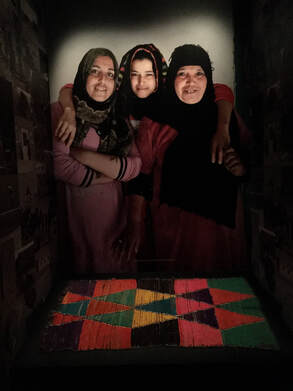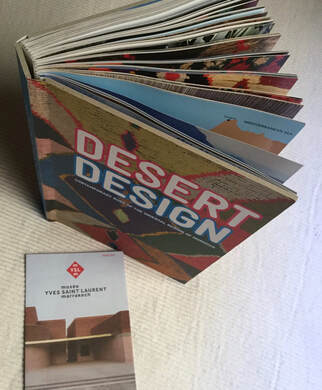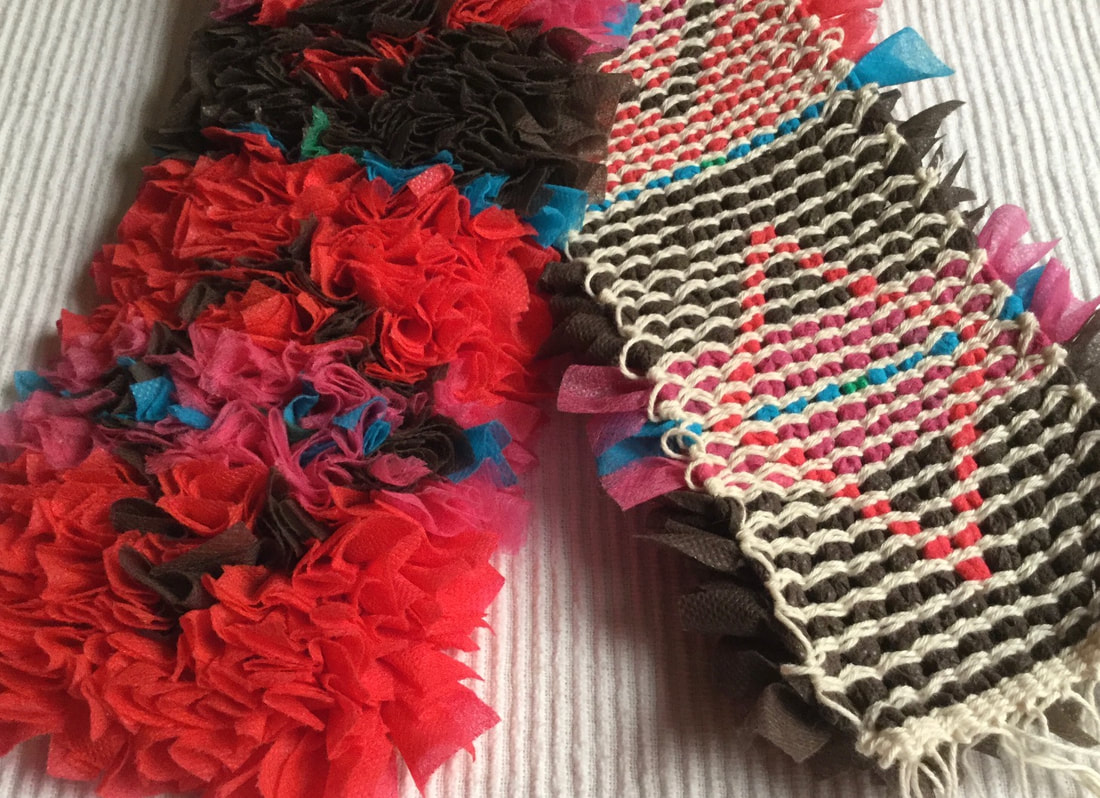Below, are some pages from the magazine - World of Interiors; an article I saved because it resonated strongly with me in a number of ways. It's written by Marie-France Boyer, with photos by Serge Anton and was published in 2014. It talks of Eric Ossart and Arnaud Maurieres, two Frenchmen who were collecting rugs in eastern Morocco.
I bought these pages with me when I moved to Morocco in 2015....
I'm intrigued by the colour, pattern and design of these rugs made by women from the Aït Kebbach tribe of the eastern Moroccan desert. They were once nomads whose vast desert terrain took in Algeria, and were forced to change their lifestyle in 1956 when Morocco gained independence and the frontier between the two countries was defined. They settled on the Moroccan side and no longer lived beside their flocks of sheep. They had slept in tents on blankets, both of which they wove, but now found themselves on hard floors surrounded by flat walls. And so they started to weave soft rugs and cushion covers; creating a decorative and comfortable environment for their families.
No longer having a ready supply of sheep's wool they bought jumpers from the souk and unravelled them. The fibre was generally synthetic but the colour range was fantastic. The women sometimes added real wool, dyed with chemical powder, tea or henna. Also scraps of cloth were knotted and woven through along with purchased strong cotton yarns.
You can imagine my delight when this exhibition opened in June 2019, at the Yves Saint Laurent Museum in Marrakech :
" DESERT DESIGN - Contemporary Rugs of the Eastern Region of Morocco "
Eric Ossart and Arnaud Mauriѐres, the collectors of the rugs in the magazine article above, were the Curators of this exhibition. They bought some of their vast collection to the walls of the Temporary Exhibition Space. By doing this, they changed the context* of these rugs; no longer spread out on a concrete floor or the dirt ground, they transformed into large, abstract, fibre sculptures. Each wild, strong and vivid creation paired with a neat name plate; here the Ait Kebbach women were being individually honoured. It was most gratifying to see their faces alongside photographs of their landscapes and intimate shots of their house interiors. Also to celebrate with them their achievements; the public acknowledgement of their ingenuity, skills and hard work. What a joy!
* The word context originates from the Latin - contexere - to weave together.
and a complete and affordable catalogue was published.
Mina Badi - Khadija Lahcen - Haga Ougil
BELOW - LEFT TO RIGHT
Adjou Bassou - Ito Bouykbane - Tisserande (pseudonym)
So inspired by these various coloured fibres, patterns and wildly beautiful, creative responses these women have made - I started my own experiments...
During my Textile Tours we spend time with Mina (an Amazigh woman in the Draa Valley) who, among her many skills, shows us the knot she makes to create her rugs. This knot "unit" of colour/texture can read like a pixel, a stitch, a blob of paint etc, and build into patterns to create overall designs.
Here are my experiments/samples using both purchased and recycled materials....
| I use a simple cardboard loom, that you've seen my tour participants use on my Facebook posts, and a cotton warp. (I'm still using the large hank of cotton I purchased in Agdz souk in Southern Morocco.) The knots/pile are created from recycled polypropylene bags cut into small strips, alternating rows with a cotton weft. |
Having the back face uppermost aids the cleaning of the rug - as feet walking backwards and
forwards help to dislodge any built up dirt and deposits it on the floor for sweeping up.
| The second experiment using smaller polypropylene strips, and a cotton warp like the sample above, but with a multi coloured acrylic thread weft. I'm using the polypropylene bags mainly for their colour. The material is not robust enough for a rug unfortunately, but it's a material I had to hand in abundance, and suitable for testing these techniques and ideas. To explore further, you'll see pictured below, I tried some cotton cloth strips (cut from old scarves). The warp is the usual cotton like before, but the weft is a hand spun sheep's wool. This combination of materials is widely used here in Morocco to make Boucherouite (rag) rugs. |
These small samples were fun to make - I offer one and two day Boucherouite 101 workshops - where you'll learn to set up a simple loom and weave and knot a sample piece using your own recycled cloth, wool, cotton and polypropylene bags. Suitable for all levels including beginners.
There are paintings brewing too but I'll save them for another Blog post.










 RSS Feed
RSS Feed